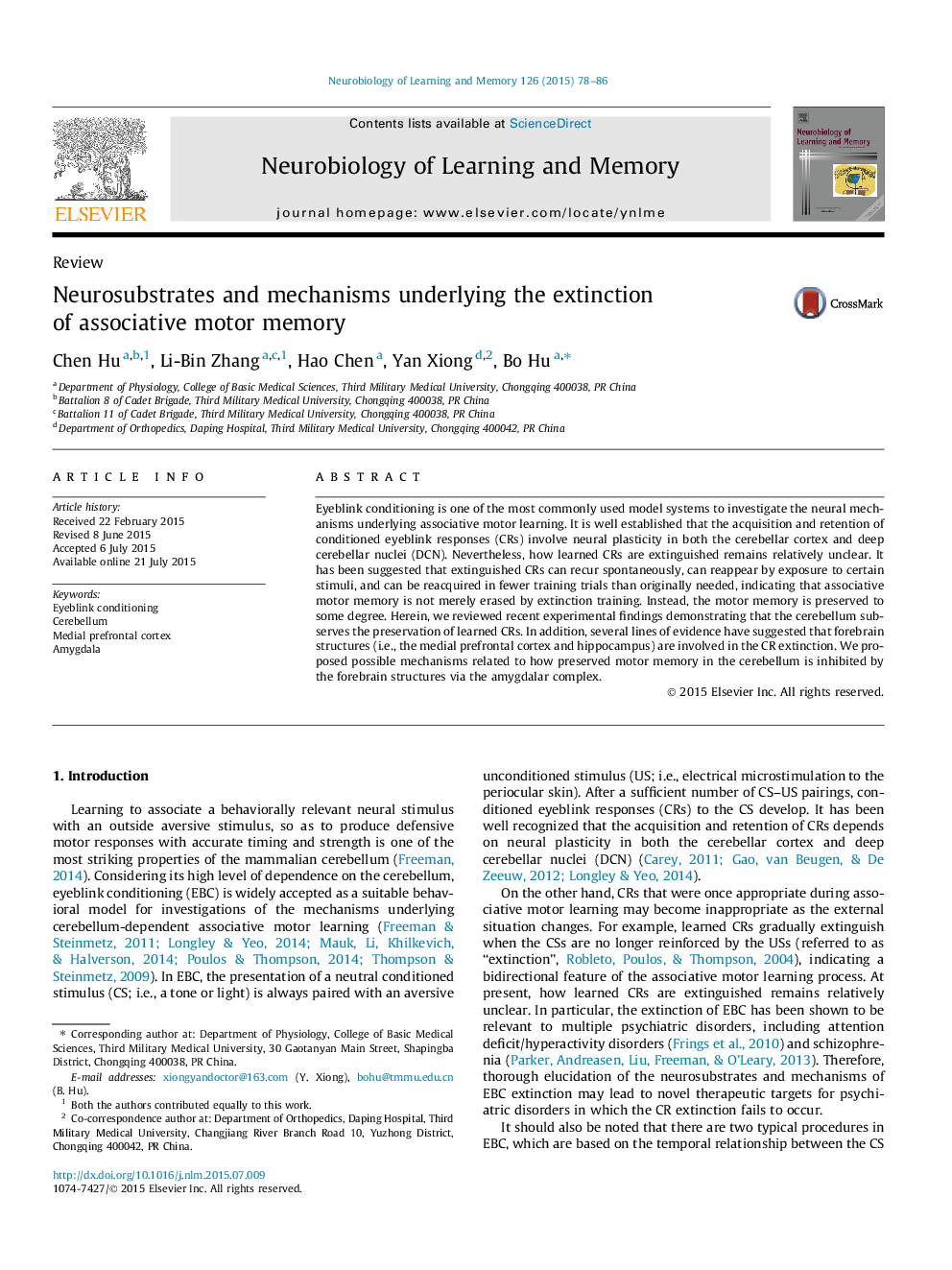| Article ID | Journal | Published Year | Pages | File Type |
|---|---|---|---|---|
| 936513 | Neurobiology of Learning and Memory | 2015 | 9 Pages |
•The incidence and magnitude of CRs progressively decrease during EBC extinction.•However, the original motor memory is preserved in the cerebellum to some degree.•Extinction training may induce new active learning in forebrain structures.•The mPFC participate in inhibiting the preserved CRs via the amygdalar complex.
Eyeblink conditioning is one of the most commonly used model systems to investigate the neural mechanisms underlying associative motor learning. It is well established that the acquisition and retention of conditioned eyeblink responses (CRs) involve neural plasticity in both the cerebellar cortex and deep cerebellar nuclei (DCN). Nevertheless, how learned CRs are extinguished remains relatively unclear. It has been suggested that extinguished CRs can recur spontaneously, can reappear by exposure to certain stimuli, and can be reacquired in fewer training trials than originally needed, indicating that associative motor memory is not merely erased by extinction training. Instead, the motor memory is preserved to some degree. Herein, we reviewed recent experimental findings demonstrating that the cerebellum subserves the preservation of learned CRs. In addition, several lines of evidence have suggested that forebrain structures (i.e., the medial prefrontal cortex and hippocampus) are involved in the CR extinction. We proposed possible mechanisms related to how preserved motor memory in the cerebellum is inhibited by the forebrain structures via the amygdalar complex.
